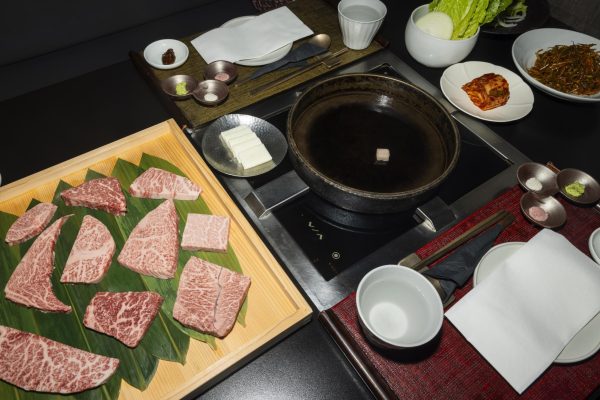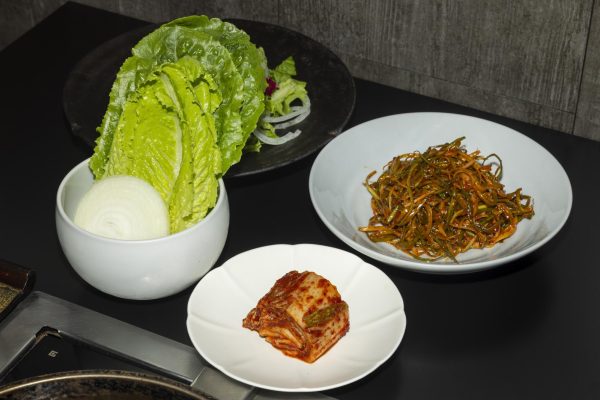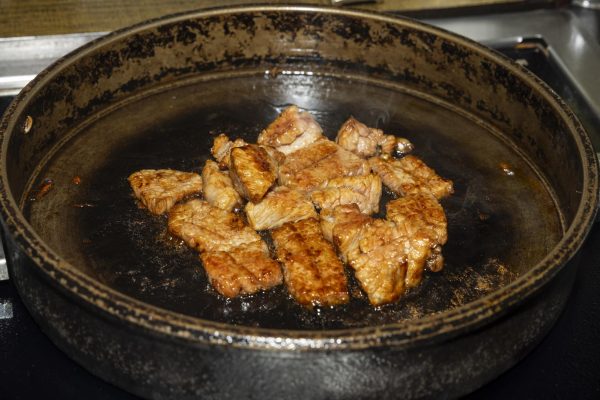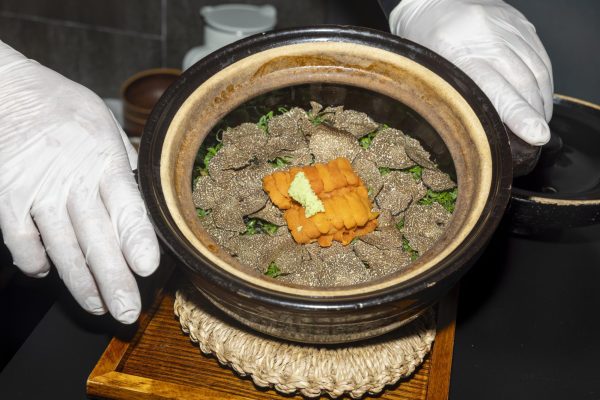Last April, I was faced with one of life’s toughest questions: Where should I host my 20th birthday dinner? As a snobby New York City foodie, I felt the pressure to find the perfect restaurant for the occasion. I wanted a meal no less than comforting, communal and classy, but still nothing too stuffy like an Eleven Madison Park or Jeans-Georges.
Finally, after annoying several of my friends for recommendations and stalking their Beli bookmarks, I decided on a Koreatown restaurant that most of them haven’t heard of — HYUN. A discreet yet stylish establishment located a block away from the Empire State Building, HYUN is a Michelin Guide-featured Korean barbecue restaurant where hyper-attentive servers hover over your table and grill your meat for you. But the meat here is not your run-of-the-mill scraps of flank that some other K-Town spots serve. HYUN serves whole cuts of the real deal — Japanese A5 Wagyu flown in from Hokkaido and Kagoshima.

Renowned for curating the all-you-can-eat “HYUN-makase” menu with over 12 different cuts of non-marinated raw beef — which include beautifully marbled ribeye, striploin, culotte and short rib — executive chef-owner Jae Kim butchers every chunk of cattle himself. Once your selection is ready, Kim or another server comes out to your table and presents these cuts across a bamboo board, showing them off like trophies or pristine works of art. After each cut is explained, the 90-minute all-you-can-eat timer starts and diners are off to see how much Wagyu the human stomach can possibly handle.
As Kim began grilling the first few cuts during my visit, complimentary banchan — Korean side dishes — were also brought to the table, including a salad with a light vinaigrette, gochujang-tossed spring onion curls, cabbage kimchi, soybean paste and romaine lettuce leaves, all meant to pair with the Wagyu. While the banchan provided texture and freshness to offset the richness of the meal, the most exquisite pairing was the trifecta of house-made condiments: truffle salt, red wine salt and wasabi.

At HYUN, there’s a special science behind which salt, sauce and side dish go with which cut of beef. As Kim grilled up a storm and served Wagyu directly to my plate, he instructed me to pair the ribeye specifically with the wasabi and dip the striploin into both the soybean paste and truffle salt. All the recommended combinations were stellar, but I particularly enjoyed trying each cut with a dash of red wine salt. The tartness and near bitterness of the salt’s wine flavor enhanced the rendered fat in each bite of Wagyu, creating a sort of sour sophistication I had never tasted in beef before.
However, the best bite of all was the beef by itself. No fancy add-ons, no lettuce wraps — I made sure to relish in how melty, buttery and honestly beautiful the Wagyu was. It was so tender I barely even had to chew.

Partway through my “HYUN-makase” journey, I also opted for a couple of a la carte items, including the cheese and sot-bap. Imported from Imsil County, also known as the cheese mecca of South Korea, the grillable cheese has a slightly firmer and gummier feel than Western cheeses and creates a plush bite when paired with the coulotte, also known as top sirloin cap. It didn’t add much to the flavor profile of the beef, however, and for only four small pieces, I’m not sure if the dish should sport its $14 price tag.

The sot-bap, on the other hand, was excellent –– and rightfully so, considering its generous heaping of fine black truffle and Japanese uni. Similar to risotto, sot-bap combines pot-cooked rice with a variety of ingredients, and while most Korean restaurants offer simpler versions using mushrooms, vegetables and egg, HYUN takes the dish to a whole new level. The truffle and uni together made the rice creamy, peppery and sweet — and when eaten with a little bit of Wagyu, I was met with a heavenly combination of flavors.
In the last 30 to 40 minutes of the meal, I was able to reorder the cuts of beef I liked the most. I happily ordered many more rounds of ribeye and short rib, which I found to be the most tender cuts. After a while, I stopped eating the banchan so that I could pack in as much beef as possible, which, in the end, proved to be a smart decision. Considering many butcher shops and grocery stores can run you up at least $150 for a single Japanese A5 Wagyu steak, the “HYUN-makase” experience gives you a surprisingly good bang for your buck at $159 per person.
It’s safe to say I ended my 20th birthday dinner with a full belly and happy loved ones. Don’t get me wrong — HYUN doesn’t make sense economically for anyone, especially a student, to be a regular. But if you ever want to splurge on a birthday with friends or family, a victory after finals season or a celebration of landing a dream job, I can’t think of a better place to do so.
Contact Andrea Lui at [email protected].

























































































































































